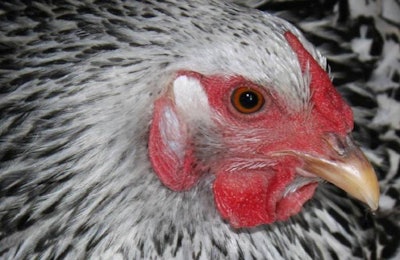
While South Korea has announced the first outbreak of highly pathogenic avian influenza (HPAI) in four months, there have been further cases in Nigeria. In addition, the French government has announced further details of a scheme to compensate businesses affected by the disease.
Within the past two weeks, HPAI has returned to South Korea, and there have been 5 outbreaks in Nigeria.
New outbreaks in poultry
The Ministry for Agriculture, Food and Rural Affairs in South Korea has announced that 20 breeding ducks at a farm at Icheon have tested positive for the H5N8 strain of HPAI, reports news agency, Yonhap. The farm is 80km east of the capital city, Seoul, in the province of Gyeonggi. After all 10,970 ducks were culled, the farm was placed under quarantine to prevent the virus from spreading.
The last outbreak of HPAI in South Korea caused by this viral strain was in November of 2015, and the source of this latest virus is still under investigation.
Over the last two weeks, there have been five new outbreaks of HPAI caused by the H5N1 virus subtype in Nigeria. The veterinary authority there reported to the World Organisation for Animal Health (OIE) that all the birds affected – almost 14,000 – were laying hens of various ages. They were in the states of Edo, Kano, Katsina and Plateau – where previous cases have been reported – and the majority of birds were on farms. The disease also affected one backyard flock, and the authorities again attributed to the cause of the outbreaks to poor biosecurity.
Compensation for French companies affected by avian flu
Having announced the principle of compensation to avian flu-affected businesses in France in January, Minister of Agriculture, Stéphane Le Foll, gave more details last week about the support that will be provided by the French government.
There is a budget of EUR130 million (US$148 million) for producers of ducks and geese as well as hatcheries. Up to EUR110 is available for farmers of waterfowl to cover their estimated losses, based on the number of lost birds and production, according to each type of production, established in consultation with the sector. An advance of at least 50 percent of the estimated loss will be paid by the end of May and the balance when the total impact is known. Almost EUR2 million has been offered to 76 affected farm businesses already. A similar scheme will be set up for producers of other poultry affected by the depopulation policy.
The remaining EUR20 million will be allocated in May to hatchery owners affected, whether they are located inside or outside the disease control zones.
For other businesses affected – for example, slaughterhouses, processors, transporters, sanitation companies and feed companies – compensation will be available for up to 2 years to cover losses once they have been assessed. The budget for compensation to these businesses is EUR60 million (US$68 million).
These assistive devices will be notified to the European Commission by the French government.
There have been no further reports of HPAI outbreaks in France since March 15, so the total number remains at 76.
One outbreak of low-pathogenic avian influenza (LPAI) has been reported to the OIE – the H5N3 virus was detected in a flock of 700 breeding geese at Montaut in the department of Landes, where 31 HPAI outbreaks have occurred. This is only the second time that this virus subtype has been confirmed during this series of outbreaks starting in December 2015, and it was detected as the result of routine surveillance. All the birds in the flock have been destroyed as a precaution.
No evidence of wild bird involvement in US outbreaks in 2015
Surveillance during an outbreak of HPAI H5N2 in Minnesota garnered only two HPAI isolates from wild birds, according to a recent study, according to the Center for Infectious Disease Research and Policy (CIDRAP), and other new research has revealed no evidence for HPAI circulation among migratory wild birds in Alaska.
New human cases of influenza A (H7N9) in humans
China’s health agency has informed the World Health Organization (WHO) about a total of 29 new confirmed cases of influenza A (H7N9), including 11 deaths, between January 17 and February 19. There has also been one further case in Hong Kong in a patient who had had contact with slaughtered poultry during a visit to mainland China. According to the case-tracking organization, FluTrackers, these latest cases bring the total number of confirmed cases to 770.















